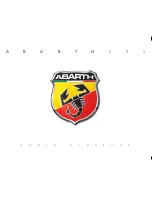
INTRODUCTION
PRELIMINAR STUDIES AND CONSIDERATIONS
MAINTENANCE AND DAMAGE PREVENTION
WORK ON BASIC VEHICLE
MOUNTING AND CONSTRUCTION
POWER TAKE-OFF
ELECTRIC AND ELECTRONIC SYSTEMS
APPENDIX
146
Body Builder Manual Part II, Specific Book LCV
V1.0, February 2015
5.2
Subframe features and design
5.2.1
General considerations
In most cases, for a perfect connection between the basic vehicle and body, it is
necessary to adapt a subframe to the body. Normally, the subframe is installed
along the entire length of the longitudinal beams of the chassis frame.
The following can be achieved by applying the following:
- A support for the body.
- A uniform distribution of weight and the loads on the chassis frame.
- Sufficient clearance for the wheels or other components that protrude from
the chassis, such as deposits, facilities, etc.
- The possibility of fixing additional components or equipment.
- Extra resistance and rigidity of the chassis frame of the vehicle, even on the
rear overhang, which is very useful when this is subjected to heavy loads.
There are different requirements when designing a subframe, and these depend
mainly on the type of vehicle, the activity during service and the condition of the
road. According to these points, the most suitable type of material and the section
profile that best meets the objectives are selected. Then the possibility of strength
-
ening the subframe by different means in different areas is studied, as is the choice
of fixing system between subframe and chassis frame that best suits requirements.
As a general rule, vehicles supplied from the factory by HMC incorporate consoles
or brackets, attached along the chassis frame, where the body should be fixed on
the basic vehicle with the proper connections.
NOTICE
To get more information about the type of connections,
see chapter 5.3 "Subframe attachment".
















































